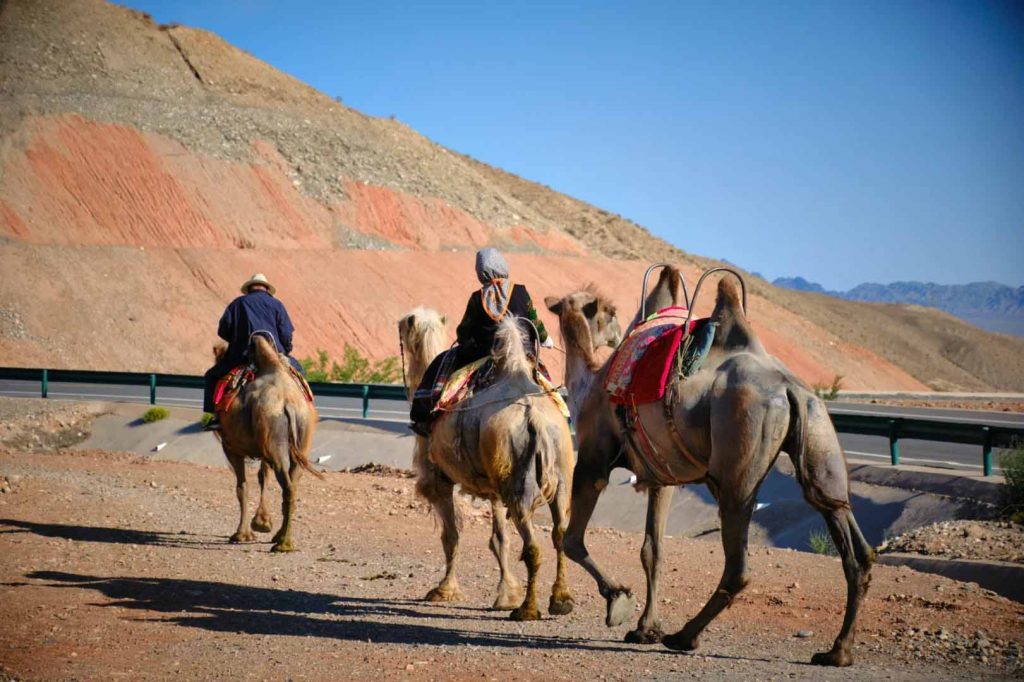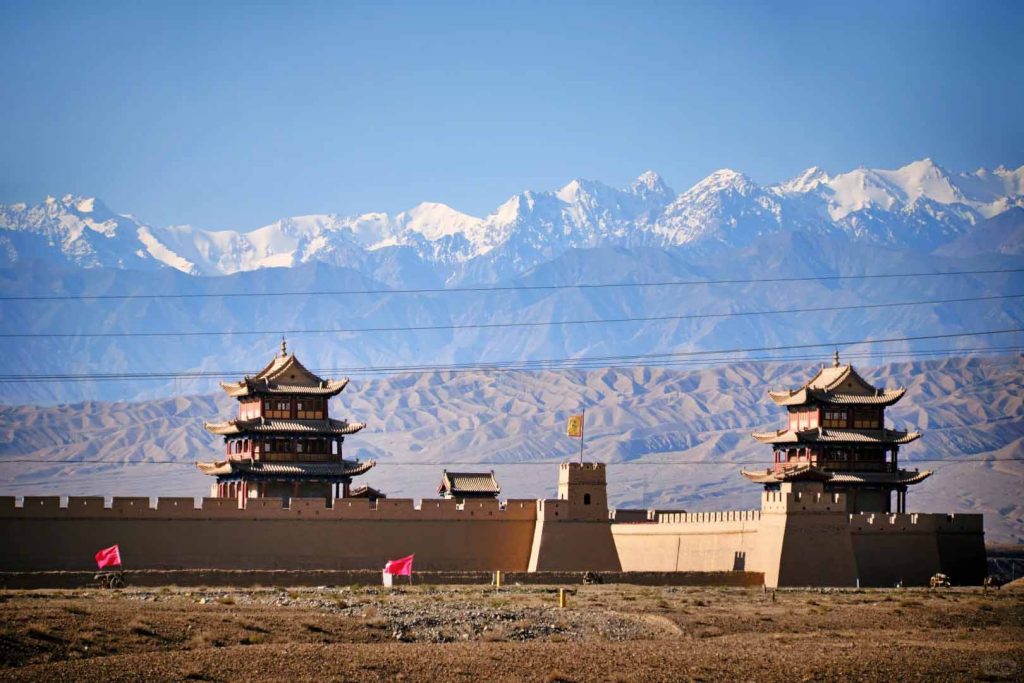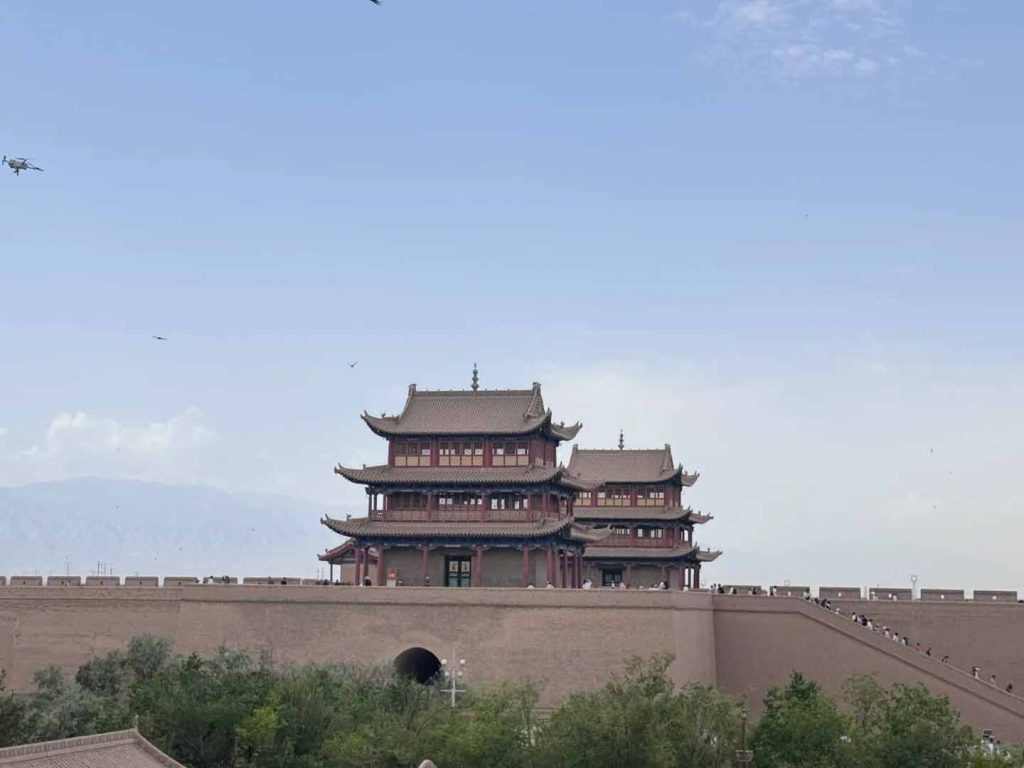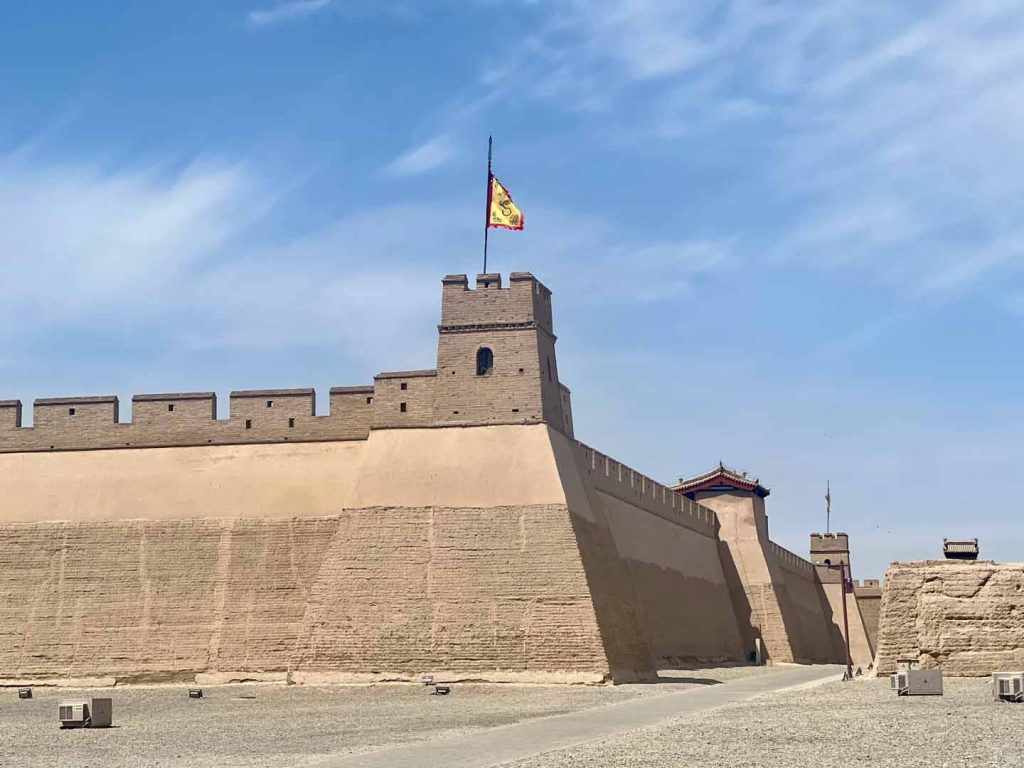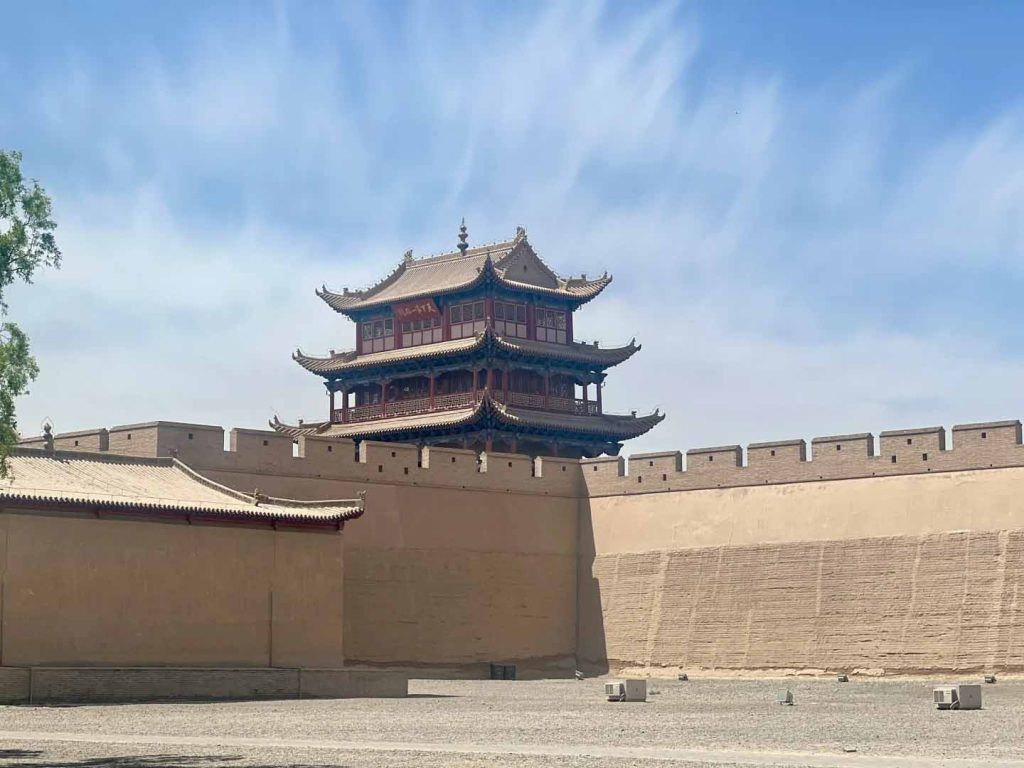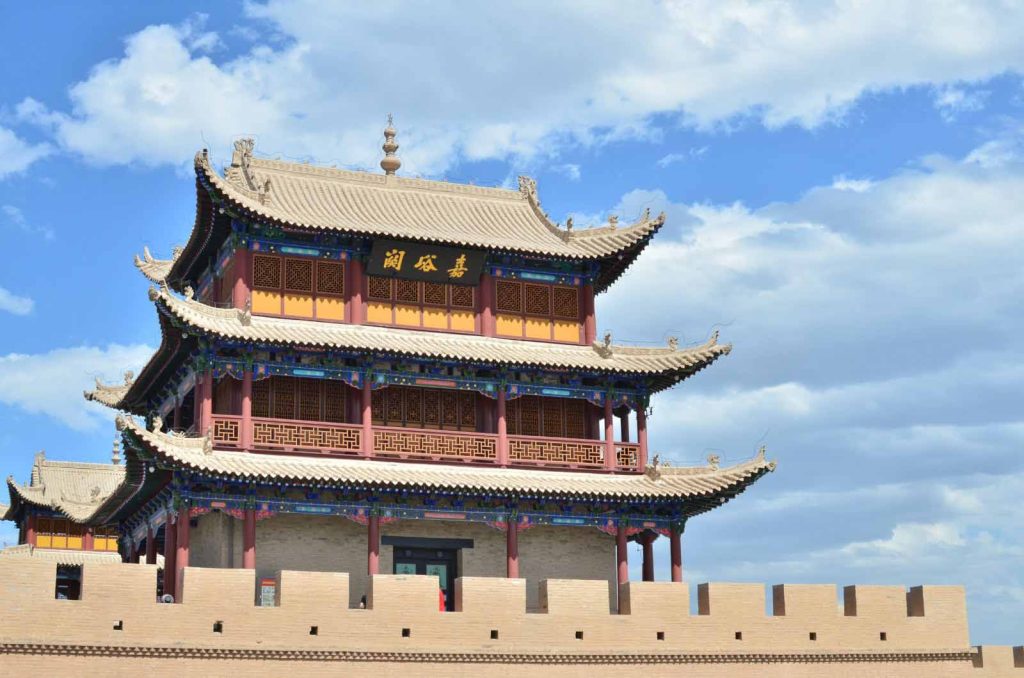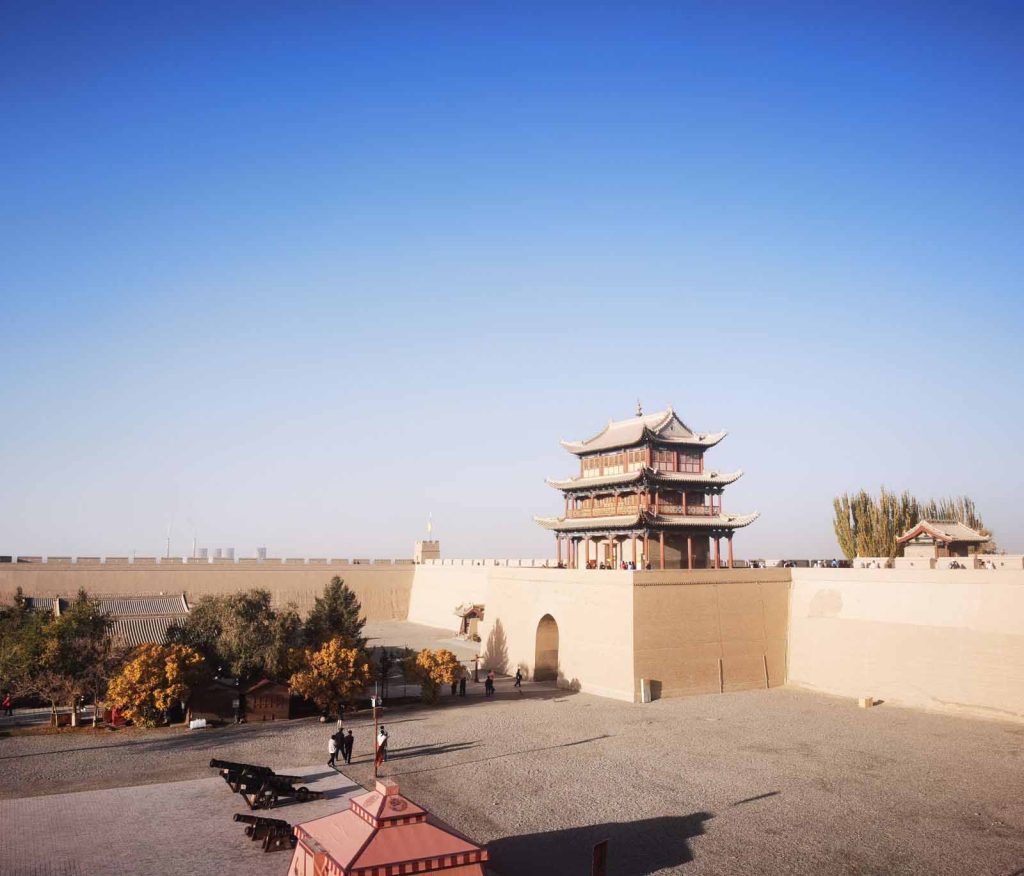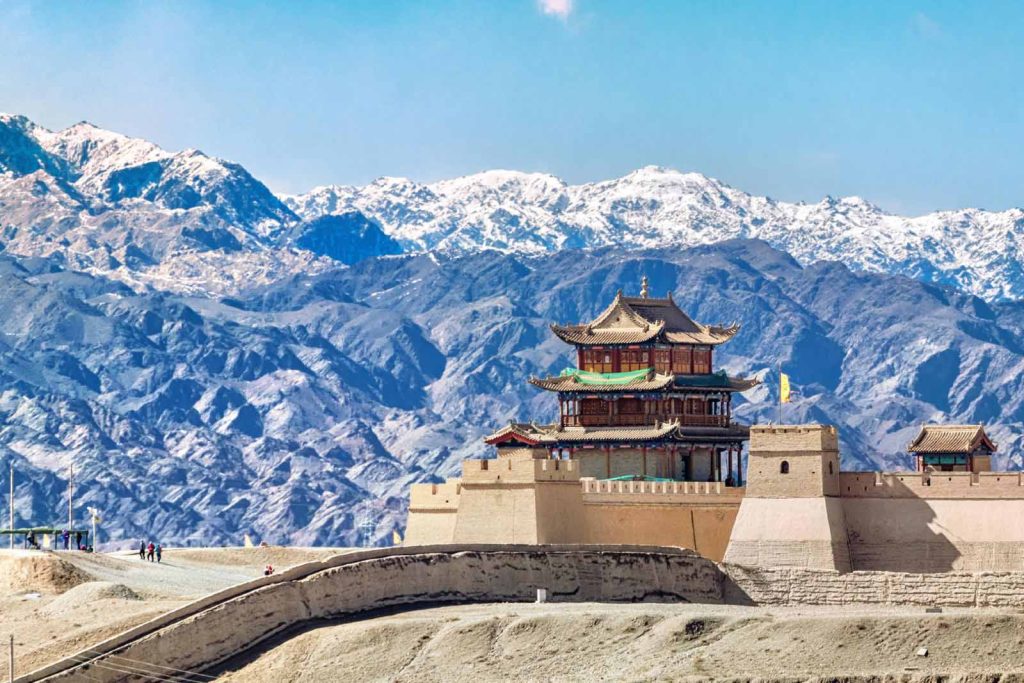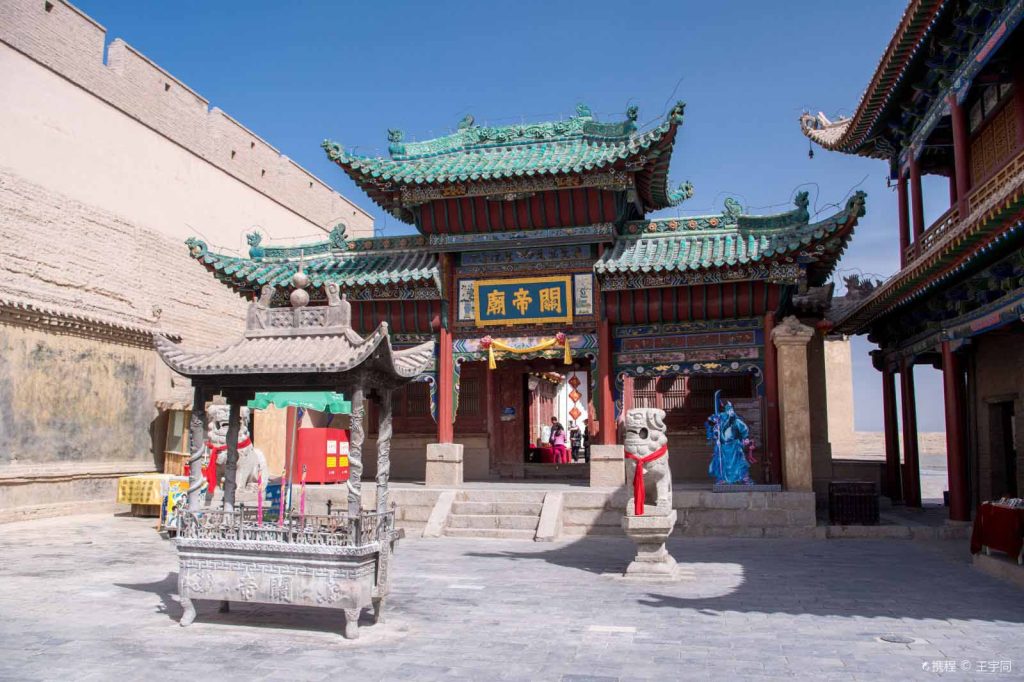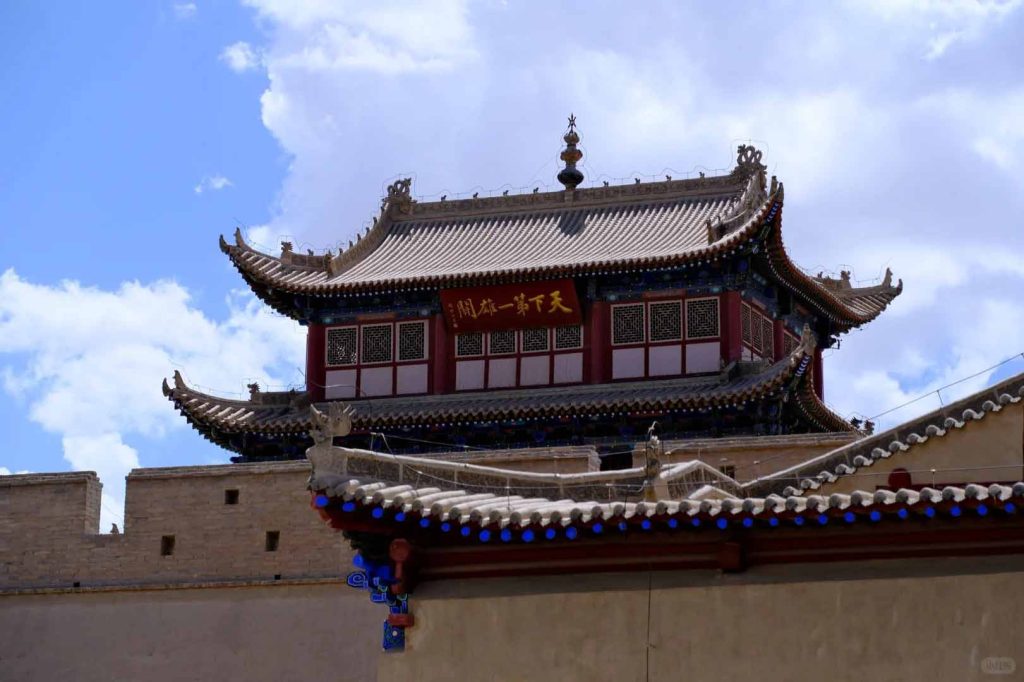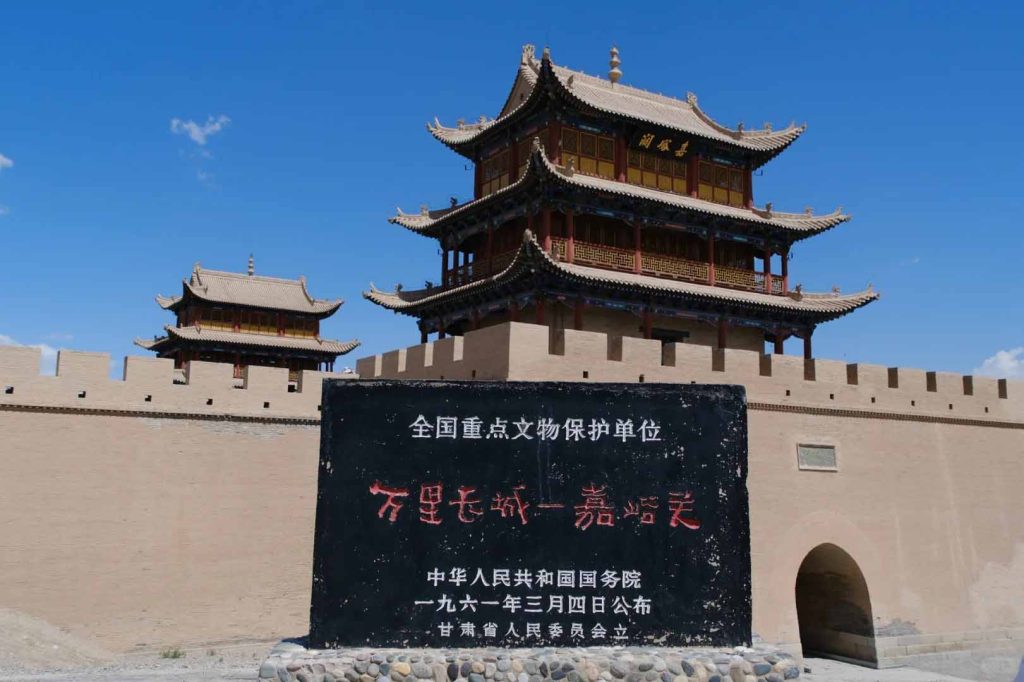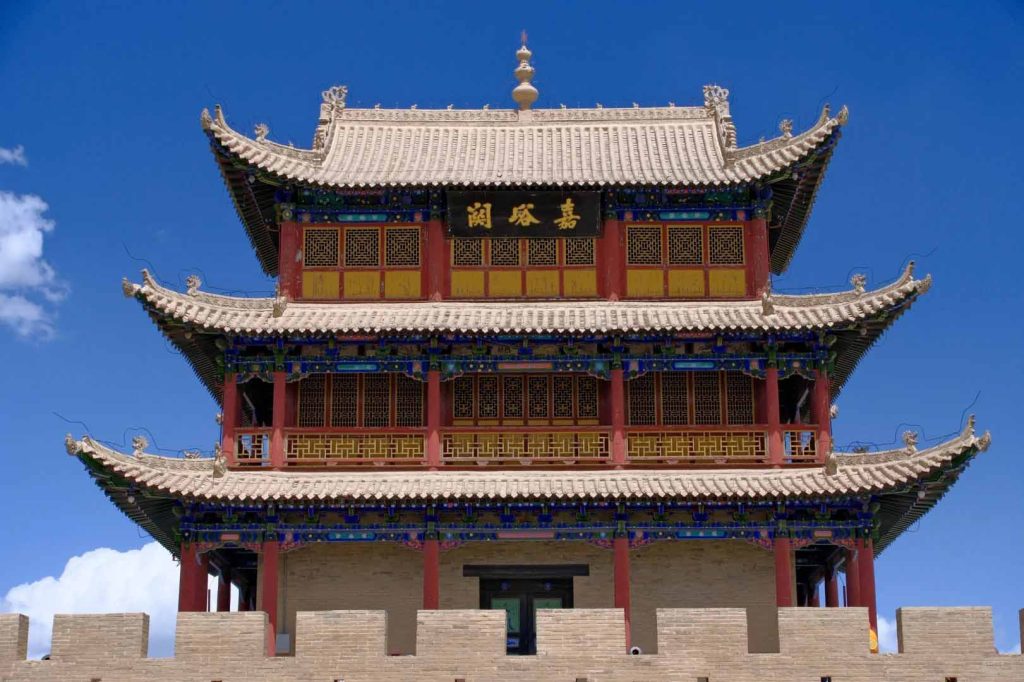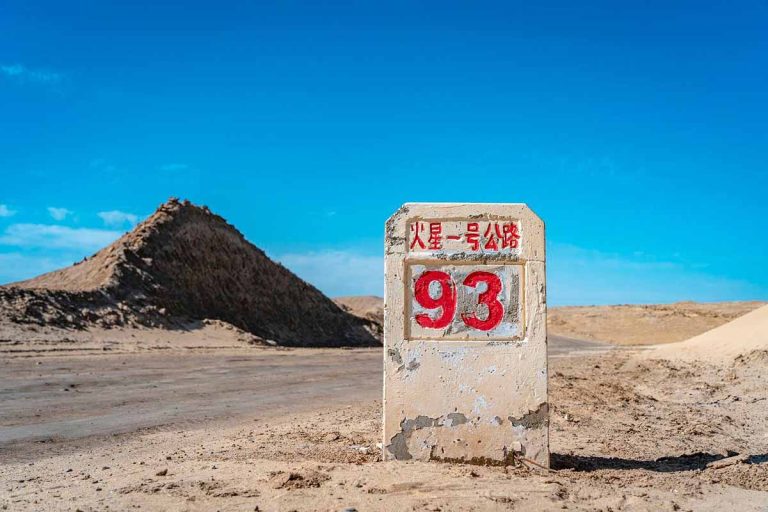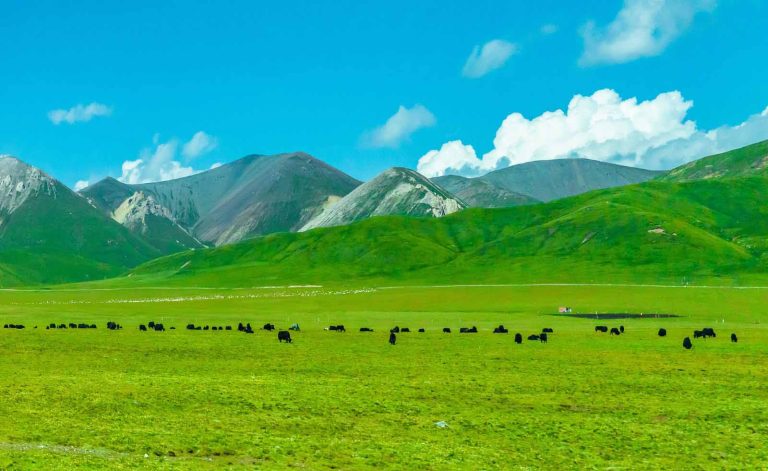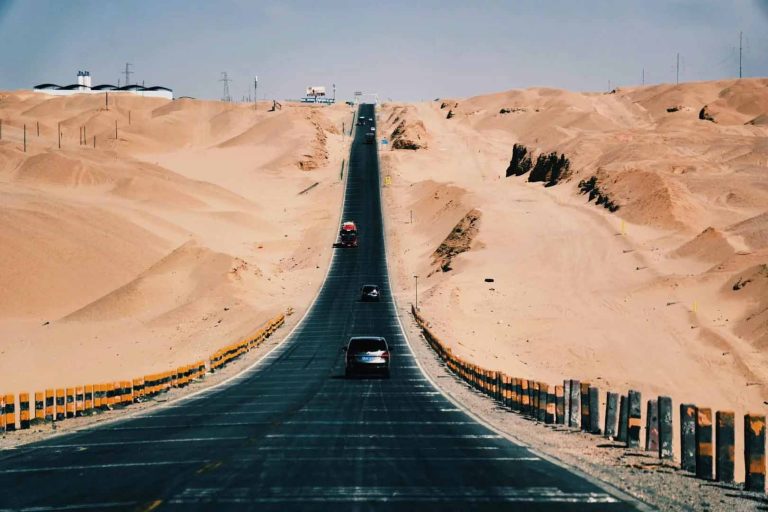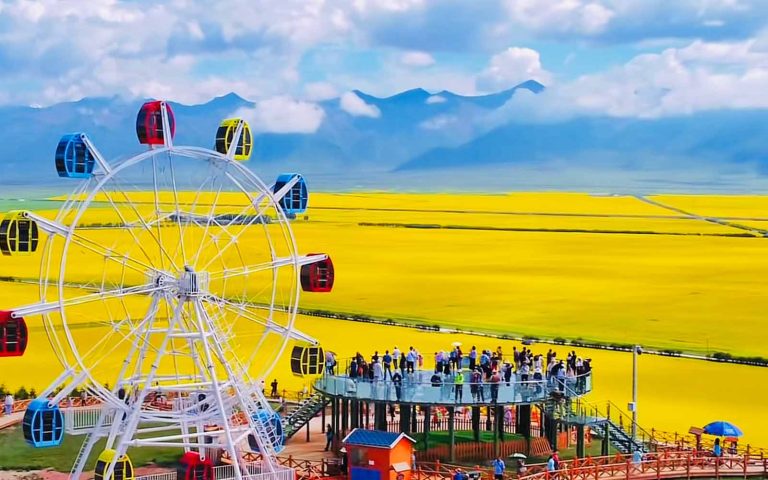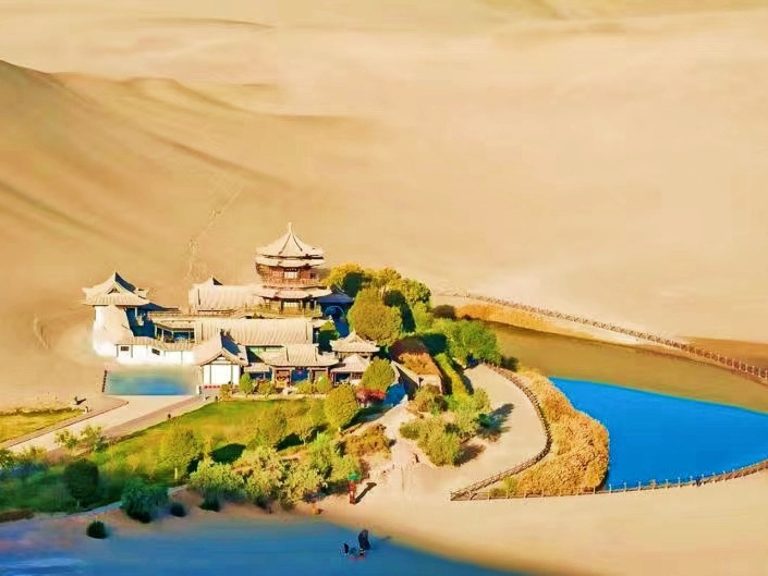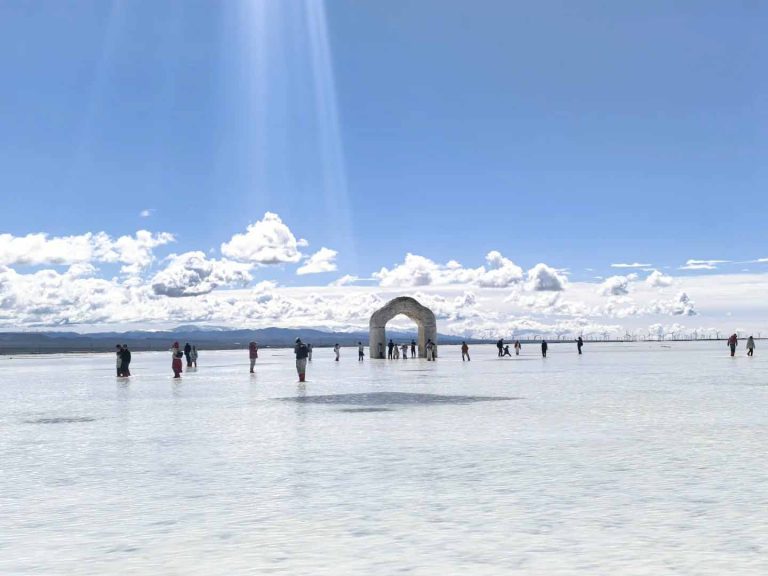address
Southwest side of the intersection of Guancheng South Road and Shuangyong Road, Jiayuguan City, Gansu Province
Opening hours
In the open garden;08:00-18:30, 19:30-23: 59 Open (ticket sales stop at 22:30, admission stop at 23:00)
Official phone number
Ticketing consultation: 0937-6396110; 0937-6396100
At the foot of Jiayu Mountain at the western end of the Hexi Corridor, stands Jiayuguan, a military fortress that has witnessed the turmoil of the Silk Road for thousands of years. As the starting point of the westernmost end of the Ming Great Wall, it echoes Shanhaiguan at the eastern end, and is known as the “No. 1 Xiongguan in the World” and “Hexi Lock”. This complete military defense system composed of city walls, gates, piers, and beacon towers is not only an outstanding representative of ancient Chinese military architecture, but also a living fossil of the integration of Silk Road culture and the Great Wall culture. It was included in the ‘World Cultural Heritage List’ by UNESCO in 1987, and now it has become a must for traveling in the Northwest to feel the weight of history.The place to check in.
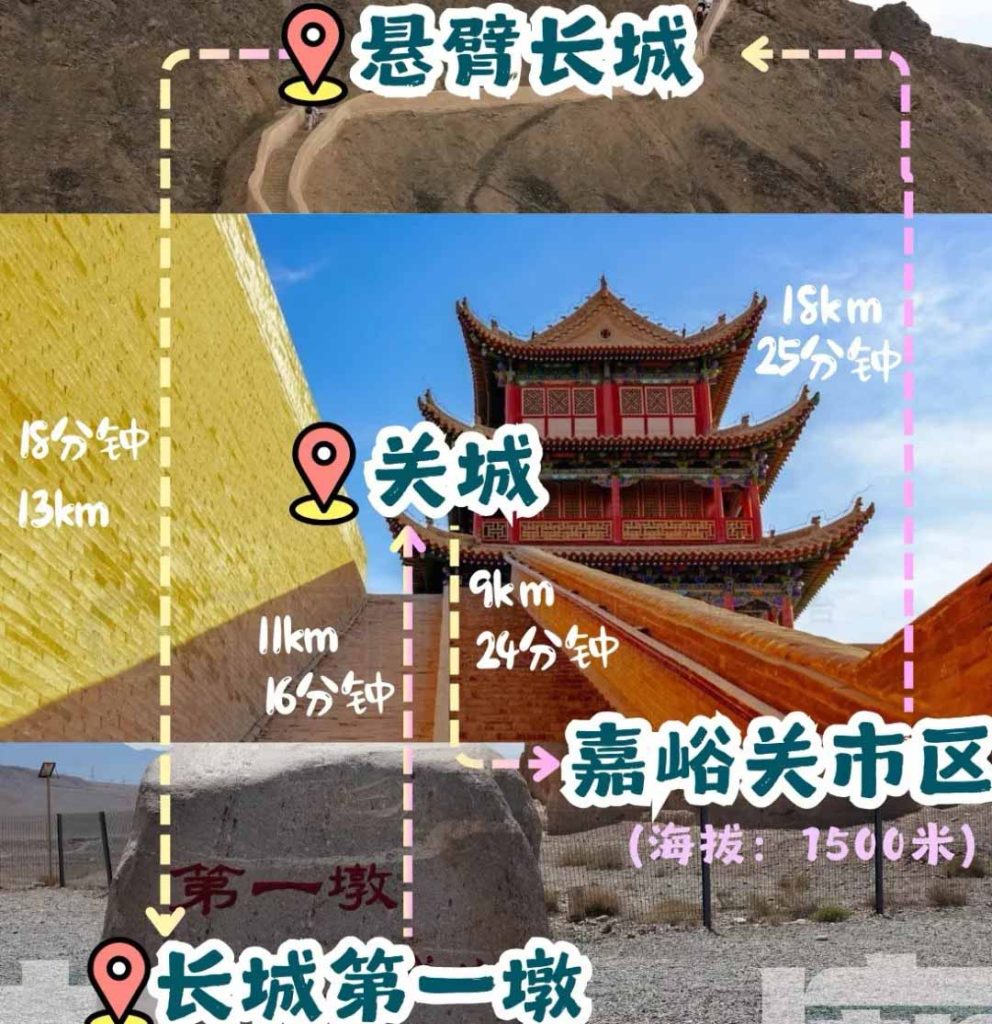
1. Core overview: The historical context of the Millennium Xiongguan
Jiayuguan was founded in the fifth year of Hongwu in the Ming Dynasty (1372 AD) and was built under the auspices of the Great General Feng Sheng. It took 168 years to fully complete. It is the largest and best-preserved pass along the Great Wall of the Ming Dynasty. The location of its construction is very strategically wise. Relying on the steep terrain of Jiayu Mountain, it guards the throat of the western end of the Hexi Corridor. Historically, it was an important barrier for the Central Plains Dynasty to resist the invasion of nomads in the western regions. It is also a must-pass place for business travelers and envoys on the Silk Road. It is known as “one pass locks the north and the south, and two passes choke the West.’The saying of ”West and East’.
The total area of the scenic area is about 4,523.36 mu. The core area consists of three parts: Guancheng, the cantilevered Great Wall, and the first pier of the Great Wall. The three are distributed in the shape of “Pin”, which together formed the core system of Hexi Defense in the Ming Dynasty. Guancheng is regulated by the “city wall is 10.7 meters high and 733.3 meters in circumference”, which shows the momentum of “one husband is the gate, and ten thousand husbands are not allowed to open”; the cantilevered Great Wall climbs on the Black Mountain like a dragon, famous for its unique form of the “upside-down Great Wall’; the first pier of the Great Wall was used as the Ming Great Wall.The starting point of the western end stands on the banks of the Zhulai River, witnessing the changes of the years.
2. Geographical location: the western gateway of the Hexi Corridor
Jiayuguan Scenic Area is located at the foot of Jiayu Mountain, 5 kilometers west of Jiayuguan City, Gansu Province. Its geographical coordinates are between 98°17′-98°27′ east longitude and 39°49′-39°53′ north latitude. It is located west of the middle section of the Hexi Corridor, about 20 kilometers east of Jiuquan City, about 90 kilometers west of Yumen City, and south of it.The northern foot of Qilian Mountain, connected to Ma Mane Mountain in the north, is an important geographic node connecting the Hexi Corridor and the western regions.
From the perspective of regional transportation, the scenic area is close to the G30 Lianhuo Expressway (Lianyungang-Khorgos),about 15 kilometers from Jiayuguan airport, about 8 kilometers from Jiayuguan Railway Station, and about 12 kilometers from Jiayuguan South High-speed Railway Station. The surrounding transportation network is convenient and it is part of the Northwest Ring Line (Lanzhou-Zhangye-Jiayuguan-Dunhuang).An important transit station, it takes about 2.5 hours by car from Zhangye and about 4 hours by car from Dunhuang. The geographical location is superior.
3. Transportation guide: Easy to reach in multiple ways
(1) External arrival method
- Airplane travel:
- It can fly to Jiayuguan Airport (IATA Code: JGN). The airport is about 15 kilometers away from the scenic area. Routes to Beijing, Shanghai, Xi’an, Lanzhou, Urumqi and other cities have been opened. Flight time: About 1 hour from Lanzhou, about 2.5 hours from Xi’an, and about 4 hours from Beijing..
- Airport transportation: There is a taxi (about 30-40 yuan /car, which takes 25 minutes) directly to the scenic area outside the airport; you can also take the airport bus (10 yuan /person, 30 minutes) to Jiayuguan City (Xiongguan Square Station), and then transfer to a bus or take a taxi to the scenic area.
- Train / high-speed rail travel:
- High-speed rail: Jiayuguan South High-speed Rail Station is the main high-speed rail station, about 12 kilometers away from the scenic area, about 3.5 hours from Lanzhou West, about 2.5 hours from Zhangye West, and about 2 hours from Dunhuang (Dunhuang to Jiayuguan High-speed rail has been opened, new line in 2024).
- Ordinary train: Jiayuguan Railway Station is about 8 kilometers away from the scenic area. The train frequency covers major cities in the northwest, such as Lanzhou to Jiayuguan in about 8-10 hours. The fare is low and it is suitable for tourists with a limited budget.
- Station transportation: At the South High-speed Rail Station, you can take bus No. 10 (2 yuan/person, 40 minutes) directly to the entrance of the scenic area; at the railway station, you can take bus No. 4 (2 yuan/person, 30 minutes) or take a taxi (about 15-20 yuan, 15 minutes) to the scenic area.
- Travel by car:
- Recommended route: Starting from Jiayuguan City, follow Xinhua South Road to G30 Lianhuo Expressway (towards Dunhuang), get off the expressway from the ”Jiayuguan Scenic Area’ exit, and drive along the special highway for the scenic area for about 3 kilometers, the whole journey is about 8 kilometers, which takes 15 minutes; Starting from Zhangye, follow the G30 Lianhuo ExpresswayDriving westward, the whole journey is about 220 kilometers and takes 2.5 hours. There are clear scenic signs along the way.
- Parking lot: There is a large ecological parking lot outside the main entrance (South gate) of the scenic area. The fee for cars is 10 yuan /time and for buses is 20 yuan / time. There are plenty of parking spaces during the peak season (May-October), so there is no need to worry about parking.
- Charter a car / travel with a group:
- Charter: A charter (5-seater sedan) in Jiayuguan city to and from the scenic area is about 100-150 yuan /day. If the Great Wall and the first pier of the Great Wall are connected in series (the three attractions are about 10-15 kilometers apart), the full-day charter cost is about 200-300 yuan, which is suitable for 3-4 people traveling together and flexibly controlling the tour time.
- Follow-up group: Local travel agencies have 1-day tour products of Jiayuguan (including Guancheng, the Great Wall of cantilevered wall, and the first pier of the Great Wall), including round-trip transportation, tickets and guided tours. The per capita cost is 200-300 yuan. It is suitable for tourists who do not want to plan by themselves. The tour guide can explain the historical background in detail to enhance the tour experience.
(2) Internal tour transportation
- Scenic sightseeing bus (Guancheng-cantilevered Great Wall-the first pier of the Great Wall):
- The distance between the three core attractions is long (about 7 kilometers from Guancheng to the cantilevered Great Wall, and about 8 kilometers from Guancheng to the first pier of the Great Wall). The scenic area provides circular sightseeing buses with a fare of 30 yuan /person (including round trips to three attractions). The operating hours are the same as the opening hours of the scenic area (8:30-18:00 in peak season)., Off-season 9:00-17:00), every 30 minutes, you can get on and off at any attraction with a ticket, which is a convenient choice for connecting three attractions.
- Internal Transportation of the Fortified City:
- The interior of Guancheng Scenic Area is mainly explored on foot. The circumference of the core area is about 1.5 kilometers. The tour route is gentle. There are rest pavilions and signs along the way. The whole journey takes about 2-3 hours to walk. If you have limited physical strength, you can rent an electric scooter in the scenic area (60 yuan / vehicle, limited to 2 people, with a battery life of about 10 kilometers), easyVisit various attractions.
4. Tickets and open information: a clear and transparent ticket purchase guide
(1) Ticket price
- Joint ticket (Guancheng + Cantilevered Great Wall + First Pier of the Great Wall): 120 yuan/person in peak season (May 1st-October 31st), 60 yuan /person in low season (November 1st-April 30th of the following year), the joint ticket is valid for 2 days and can be divided into two days of tourThree attractions, cost-effective.
- Single attraction ticket:
- Guancheng Scenic Area: 80 yuan/person in peak season, 40 yuan /person in low season;
- Cantilevered Great Wall: 40 yuan /person in high season, 20 yuan /person in low season;
- The first pier of the Great Wall: 40 yuan /person in peak season, 20 yuan /person in low season.
- Preferential policy:
- Ticket-free people: children under 6 years old (inclusive) or under 1.2 meters tall (inclusive), elderly over 70 years old (inclusive) (with ID card), persons with disabilities (with disability card), active-duty soldiers (with officer card / soldier card), veterans (with veteran card);
- Half-price group: minors aged 6-18 (inclusive), full-time undergraduate and below students (with student ID card), 60-69 years old (with ID card), half-price 60 yuan /person in peak season, half-price 30 yuan / person in low season.
- Ticket purchase method: You can purchase tickets online through the official WeChat account of the scenic area “Jiayuguan Cultural Relics Scenic Area’ (real name is required, and ID card is swiped to enter the park), or you can purchase tickets at the scenic area ticket window (Guancheng South Gate, Cantilever Great Wall, and the first Pier of the Great Wall are all ticket points) on-site. It is recommended to purchase tickets in advance during the peak season. Purchase tickets online for 1 day to avoid queuing on site.
(2) Opening hours and best time to visit
- Opening hours: Peak season (May-October) 8:30-18:00 (admission deadline 17:00), low season (November-April) 9:00-17:00 (admission deadline 16:00), holidays (such as May 1st, National Day) may be opened 30 minutes in advance, the specific announcement of the scenic area shall prevail.
- Best time to visit:
- 9:00-11:00 am: The light is soft, suitable for visiting Guancheng, taking pictures of the details of the towers and city walls, and avoiding the high temperature in the afternoon;
- 16:00-18:00 pm (peak season): The sunset shines obliquely on the city walls of Guancheng, showing a warm golden-red color. It is a prime time to take panoramic views of Guancheng. At the same time, you can go to the first pier of the Great Wall to enjoy the sunset on the banks of the Zhulai River.;
- Off-season (winter): There are fewer tourists, so you can quietly feel the desolate beauty of Xiongguan. In case of snowfall, the snow-covered city of Guancheng is more poetic, but you need to keep warm.
5. Must-visit attractions and featured experiences
(1) Highlights of the three core attractions
- Jiayuguan Guancheng:
- Core points of view: Guancheng consists of inner city, outer city, Luocheng, Urn City, and city trench. The layout is rigorous and magnificent. The main attractions include “Guanghua Gate”, “Ruoyuanmen”, “Jiayuguan Tower”, “Guerrilla General’s Mansion”, “Guandi Temple” and so on. Among them, Jiayuguan Tower is an iconic building of Guancheng. It is 17 meters high and has three floors and three eaves. It can overlook the entire layout of Guancheng and the surrounding Gobi scenery. As the office of the garrison generals of the Ming Dynasty, the guerrilla General’s Mansion retains a large number of furniture and weapons from the Ming and Qing Dynasties, showing the military life at that time..
- Check-in points: the stele of ”The World’s No. 1 Xiongguan’ (at the main entrance of Guancheng, you must take pictures as a souvenir), Urn City (feel the wisdom of the military design of “the Louse in the Urn”), and the inner city wall (you can walk around and experience the fun of “walking the Great Wall”).
- Cantilever Great Wall:
- Features: Named after “the city wall descends steeply from the mountain and extends on the ridge, like a cantilever suspended in the air”, it has a total length of 750 meters, the highest point is 1,700 meters above sea level, and the slope is about 45 degrees, making it moderately difficult to climb. The wall of the Great Wall is made of loess. Some passages are equipped with steps and handrails. There are “observation decks” and “enemy platforms” along the way. After climbing to the top, you can overlook the Black Mountain Gobi and the distant Qilian Mountain, and feel the unique landscape of the “Great Wall hanging upside down”.
- Check-in points: the stele of the ‘Hanging Wall of the Great Wall“ (at the entrance), the ”Wangfu Stone’ (the legendary incarnation of the wife of the garrison soldier, full of humanistic colors), and the enemy platform on the top of the mountain (the best place to take panoramic views of the Great Wall and the Gobi).
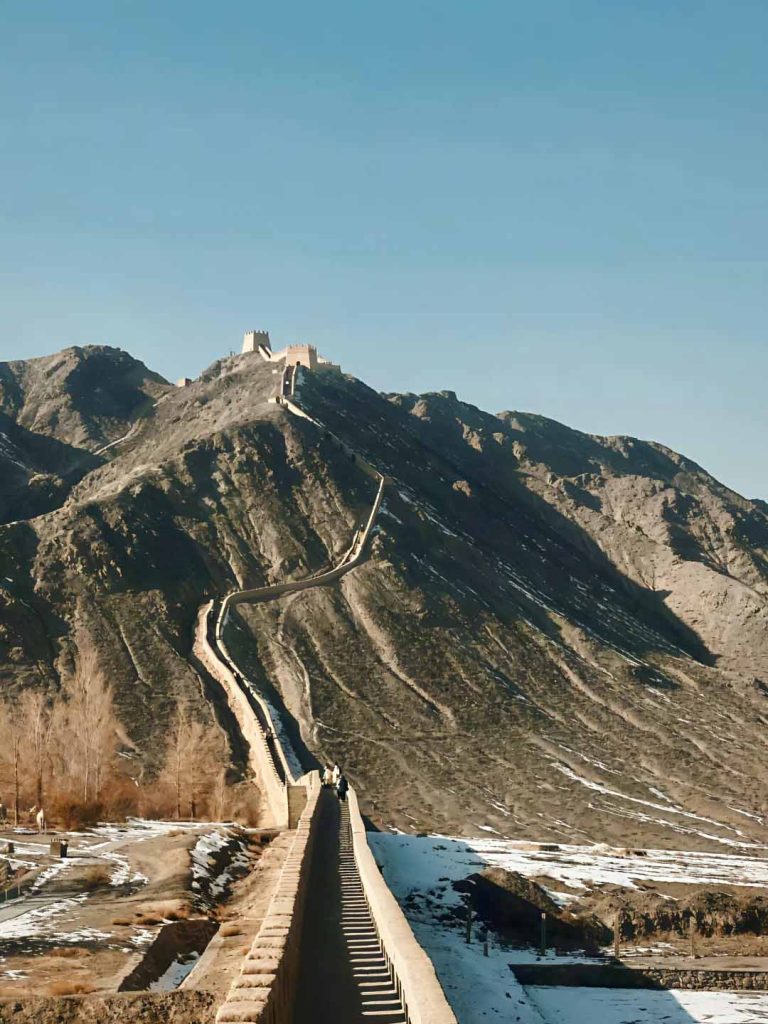
- The first pier of the Great Wall:
- Features: As the starting point of the western end of the Ming Great Wall, it was built in the 18th year of Jiajing in the Ming Dynasty (1539 AD). The original pier is 14 meters high. Now only the bottom ruins remain. It stands on a cliff on the bank of the Zhulai River. The terrain is steep. There are not only the ruins of the pier platform in the scenic area, but also the “First Pier Museum of the Great Wall” (open for free, displaying the history and archaeological discoveries of the Great Wall) and the “Gulai River Canyon Observation Deck” (overlooking the scenery of the canyon, feel the collision of nature and humanities).
- Check-in points: The ruins of the ”First Pier of the Great Wall’ monument (photos must be taken to feel the weight of history), the glass observation deck of the Gulai River (a separate charge of 20 yuan / person, cantilevered above the canyon, experience the thrills and enjoy the beauty of the canyon at the same time), the “Ming Great Wall Sand Table” in the museum (Learn about it), and the ‘Ming Great Wall Sand Table’ in the museum (learn about it).The overall layout of the Ming Great Wall).
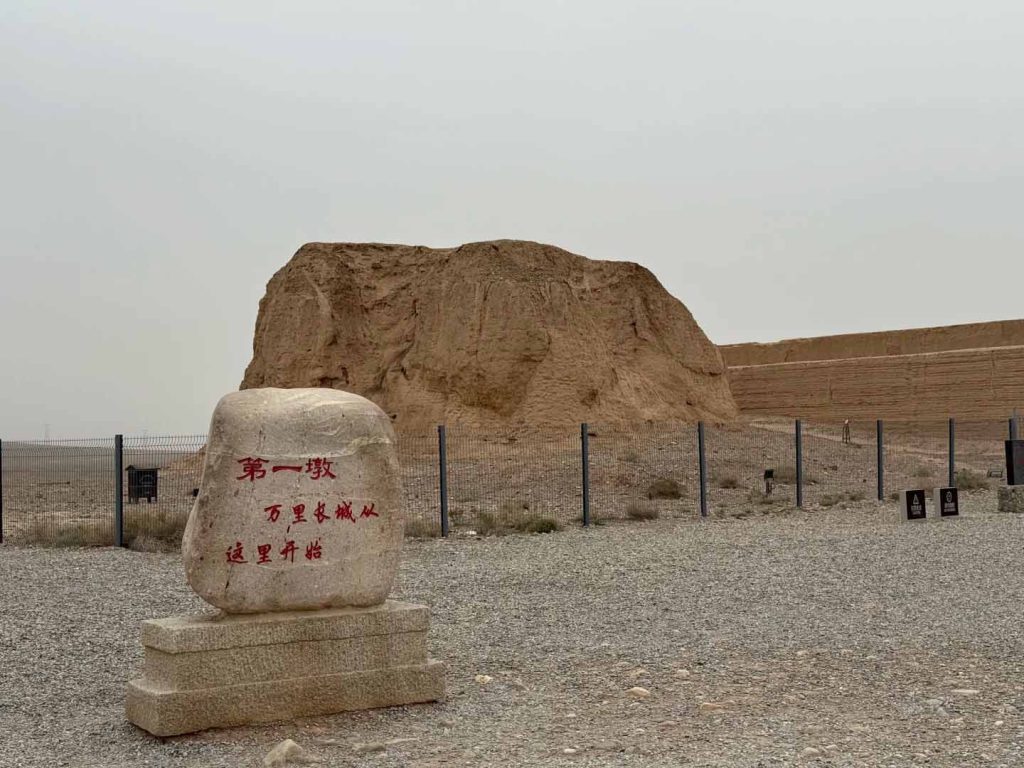
(2) Featured experience projects
- Live performance ‘Xiongguan in the World’:
- Time: During the peak season (May-October), there will be one show at 11:00 and 15:00 every day (40 minutes each). The venue is in the “Yanwu Field” in the Guancheng Scenic Area. The ticket is included in the joint ticket and there is no additional charge.
- Features: Through the interpretation of ancient costumes, the scenes of the Ming Dynasty garrison soldiers practicing, guarding the city, and interacting with the soldiers are restored. The actors are dressed in Ming Dynasty military uniforms and holding weapons to show the historical picture of “Jinge Tiema” and experience the military culture of the Great Wall in an immersive way.
- Great Wall Research Experience:
- Project: The scenic area provides “rammed earth experience” (under the guidance of professionals, use ancient tools to build the Great Wall and feel the skills of ancient craftsmen), ‘Ming Dynasty weapon experience’ (experience Ming Dynasty weapons such as bows and arrows, crossbows, etc., need to be operated by staff in designated areas), suitable for parent-child families and history lovers, The cost is about 50 yuan /person (advance reservation required).
- Photography style:
- Recommended routes: Guancheng (photographing the details and panoramic views of the towers)→ cantilevered Great Wall (photographing the ‘upside-down Great Wall” and the scenery of the Gobi) → The first pier of the Great Wall (photographing the ruins and the sunset of the Dolai River), it is recommended to bring a wide-angle lens (take the panoramic view of Guancheng) and a telephoto lens (take the details of the Great Wall). The light is strong in the afternoon during the peak season., You can bring a lens hood to avoid overexposing photos; Guancheng under the snow in winter is an excellent subject for photography, which can capture the beautiful scenery of Xiongguan wrapped in ‘silver’.
6. Practical precautions: Safe and comfortable travel to Xiongguan
- Sun protection and wear recommendations:
- Sunscreen: The scenic area is located in the Gobi Desert, with extremely strong ultraviolet rays and large wind and sand. You need to wear a wide-brimmed hat, sunglasses, and a mask. Sunscreen with SPF50+ or more can be applied. Ice sleeves can be worn on exposed areas to avoid sunburn and sand irritation.;
- Wear: It is recommended to wear comfortable sports shoes (some sections of the Great Wall need to be climbed, avoid high heels), long-sleeved trousers that penetrate the air in summer (anti-ultraviolet + anti-mosquito), and winter down jackets, scarves, gloves, and snow boots (the minimum temperature can reach -20℃, and the wind is strong, so you need to be prepared to prevent it).The wind keeps warm), the color can be selected from dark colors (such as black, navy blue), which contrasts with the tones of the Gobi and the Great Wall, and the photos are even more beautiful.
- Safety and environmental protection guidelines:
- Safety: When climbing the cantilevered Great Wall, you need to hold on to the handrails to avoid chasing and fighting. Some sections have steep slopes, and the elderly and children need to be accompanied; the glass observation deck on the first pier of the Great Wall has limited capacity and needs to be entered according to the prescribed number of people. Jumping and shaking on the observation deck are prohibited; Climbing the ruins of the City Wall is prohibited in the scenic area (some are notThe open area is fenced and it is strictly forbidden to climb over) to protect cultural relics and monuments;
- Environmental protection: Littering is prohibited in the scenic area, and there are sorting trash cans. In windy and sandy weather, garbage must be properly stored to avoid being blown away by the wind; it is forbidden to portray or smear cultural relics, and violators will face fines and legal responsibilities.
- Diet and replenishment tips:
- Supplies in the scenic area: There is a “Great Wall Restaurant” and a number of food stalls in the Guancheng Scenic Area, which provide light meals such as beef noodles (20 yuan / bowl), cold skin (15 yuan / serving), and grilled sausage (5 yuan / root), as well as drinking water (5 yuan / bottle) and beverages (8 yuan / bottle). Bottle), the price is slightly higher than in the urban area, you can bring your own small amount of dry food (such as bread and chocolate) in advance;
- Recommended urban food: There are many restaurants in Jiayuguan City (around Xiongguan Square), where you can taste local specialties, such as ‘roasted whole sheep” (80-100 yuan per person, advance reservation required), ‘Paste pot noodles’ (10 yuan /bowl, local classic breakfast), ‘stuffed skin” (8 Yuan/serving), cost-effective, you can go to the city for dinner after the tour.
- Other practical tips:
- Tour guide service: Guancheng Scenic Area provides official tour guide interpretation service, 100 yuan / time (limited to 10 people or less), the duration of the explanation is about 1.5 hours, you can gain an in-depth understanding of the historical background and architectural wisdom of Guancheng, it is recommended that multiple people join the group to share the cost;
- Accommodation recommendations: You can choose to stay in Jiayuguan City (around Xiongguan Square). There are many hotel options. The per capita cost of economical hotels is 100-150 yuan / night, and the per capita cost of medium and high-end hotels is 200-300 yuan / night. The transportation is convenient and the dining options are rich; If you want to get up close and personal with the Great Wall, you can also choose a bed and breakfast near the scenic area (per capita). 150-200 yuan /night, advance reservation is required during peak season);
- Shopping tips: There are a number of souvenir shops in the scenic area, selling models of the Great Wall, Gobi strange stones, Silk Road-themed cultural and creative products, etc., the prices range from tens of yuan to hundreds of yuan, and the prices can be negotiated appropriately when purchasing; The “Jiayuguan specialty shops’ in the urban area can buy local specialties, such as “Fa Cai” and “Suoyang’.”Wine’ (Jiayuguan has a wine region with excellent quality), pay attention to the identification of authenticity and avoid buying high-priced and inferior goods.

